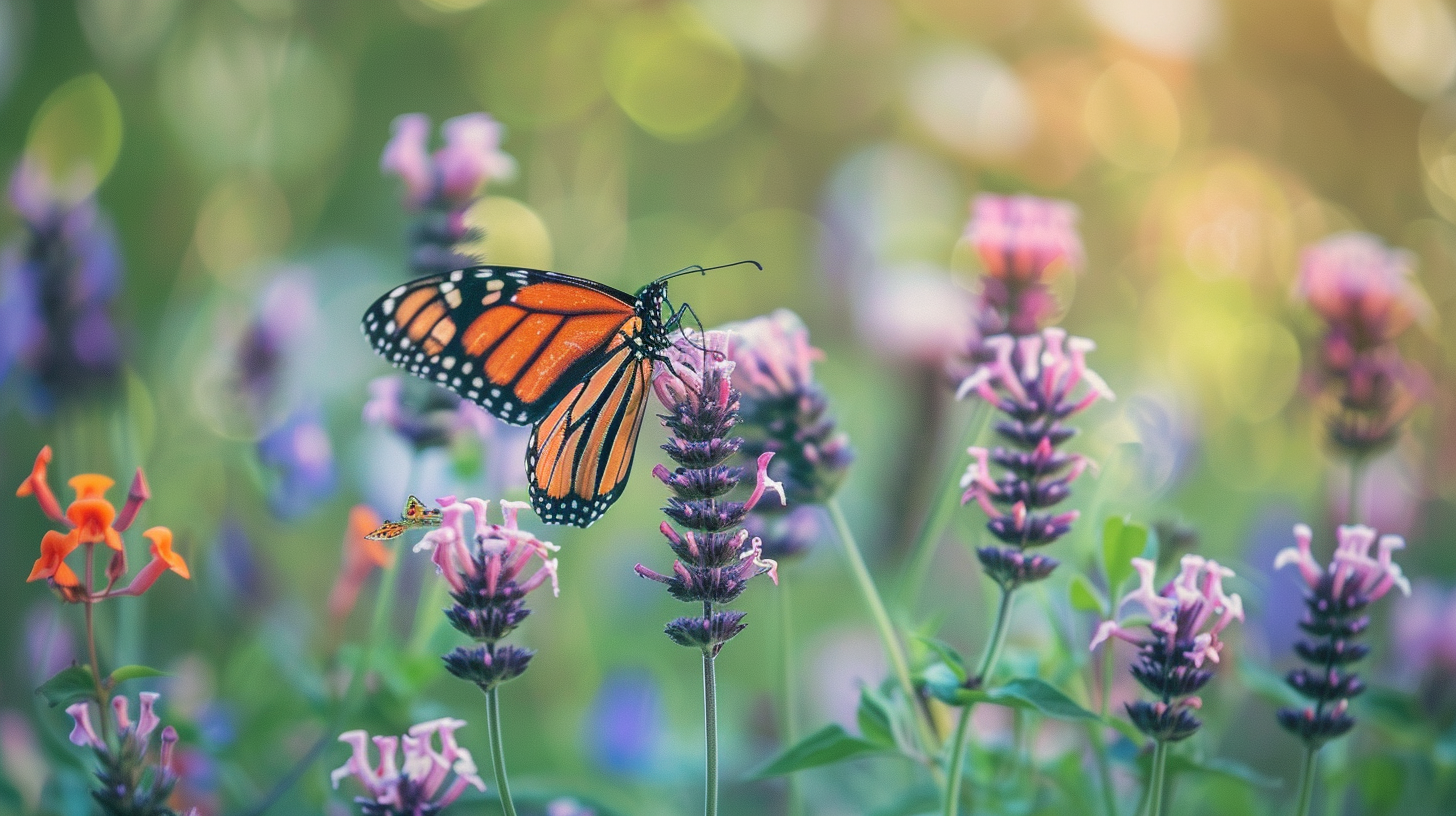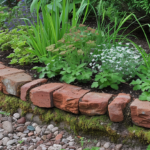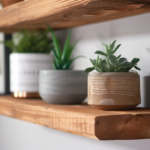Welcome to our guide on how to create a butterfly garden. In this article, we will provide you with expert advice on selecting the right plants, designing an effective layout, and attracting both caterpillars and adult butterflies. We will also discuss the importance of a chemical-free environment, incorporating host plants, and creating a habitat that is conducive to these delicate creatures. Join us as we explore the steps to creating a beautiful and thriving butterfly garden.
Selecting the Right Plants
When selecting the right plants for a butterfly garden, it is important to choose nectar-rich flowers that will attract a variety of butterfly species. However, it is equally crucial to consider the quality of the garden soil and the appropriate watering techniques. The garden soil should be well-draining and rich in organic matter to provide a favorable environment for the plants to thrive. By incorporating compost or well-rotted manure into the soil, it can improve its fertility and drainage capabilities. Additionally, proper watering techniques are essential for the plants’ overall health. Overwatering can lead to root rot, while underwatering can cause stress and hinder the growth of the plants. It is recommended to water the garden deeply but infrequently, allowing the soil to dry out slightly between waterings. By considering both the nectar-rich flowers and the condition of the garden soil and watering techniques, one can create an ideal environment for butterflies to flourish in the garden.
Designing Your Garden Layout
When designing your garden layout, it is important to consider the ideal plant placement. You should think about the space requirements of each plant and place them accordingly to ensure they have enough room to grow and flourish. Additionally, incorporating butterfly-friendly features such as water sources, nectar-rich flowers, and sheltered areas will attract and support these beautiful creatures in your garden.
Ideal Plant Placement
To ensure optimal growth and aesthetic appeal, careful consideration must be given to the placement of plants within your butterfly garden. Plant spacing and soil preparation are two key factors to consider when determining the ideal placement of plants. Proper plant spacing allows for adequate air circulation, prevents overcrowding, and ensures that each plant receives sufficient sunlight and nutrients. When preparing the soil, it is important to create a well-drained and nutrient-rich environment for the plants to thrive. This can be achieved by incorporating organic matter, such as compost, into the soil and ensuring that it is loose and crumbly. Additionally, it is beneficial to test the pH level of the soil and make any necessary adjustments to ensure that it is within the appropriate range for the plants you intend to grow. By carefully considering plant spacing and soil preparation, you can create a thriving butterfly garden that is both visually appealing and beneficial for pollinators.
Consider Space Requirements
The article discusses the importance of considering space requirements and offers guidance on designing an optimal garden layout for your butterfly garden. When planning a butterfly garden, it is essential to consider the space considerations and garden size. Butterflies require ample space to fly, feed, and lay eggs. A garden that is too small may not provide enough room for these activities, limiting the number and diversity of butterfly species that can be attracted. On the other hand, a garden that is too large may be difficult to maintain and may not effectively concentrate the resources needed to attract butterflies. Therefore, it is crucial to strike a balance and design a garden that is the right size for the available space. By considering space requirements, you can create a butterfly garden that maximizes the potential for attracting a wide variety of beautiful butterflies.
Incorporate Butterfly-Friendly Features
By incorporating a variety of nectar-rich flowers, water sources, and sheltered areas, you can create a butterfly-friendly garden that attracts a multitude of these delicate creatures. Creating a garden that supports butterfly observation and butterfly conservation is not only a beautiful addition to your outdoor space but also an important step towards protecting these valuable pollinators. Nectar-rich flowers such as milkweed, coneflowers, and lantanas are essential as they provide the necessary food source for butterflies. Water sources, such as shallow dishes or birdbaths, are also crucial as butterflies need water for drinking and puddling. Additionally, providing sheltered areas, such as tall grasses or butterfly houses, allows butterflies to rest and take shelter from harsh weather conditions. By incorporating these features, you can create a haven for butterflies, contributing to their conservation and allowing for enjoyable butterfly observation in your own backyard.
Providing Food for Caterpillars
Interestingly, ensuring an ample supply of host plants is crucial for the successful rearing of caterpillars in a butterfly garden. Caterpillars have specific dietary needs, and their diet consists solely of plant material. Different species of butterflies have different host plants, which caterpillars rely on for nutrition and survival. The caterpillar diet plays a vital role in the overall butterfly life cycle. Without an adequate food source, caterpillars will struggle to grow and develop into adult butterflies. Therefore, when creating a butterfly garden, it is essential to research the specific host plants that caterpillars in your area rely on. By providing these plants, you can attract and support a diverse range of butterfly species, ensuring the success and sustainability of your garden.
Attracting Adult Butterflies
To attract adult butterflies to your garden, it is important to select the right flowers that provide nectar and are attractive to butterflies. Flowers such as milkweed, buddleia, and coneflowers are known to be favorites among butterflies. Additionally, creating a butterfly-friendly habitat with sheltered areas, water sources, and protection from pesticides will further attract and support adult butterflies in your garden.
Flower Selection for Butterflies
An ample variety of nectar-rich flowers is crucial for attracting adult butterflies to your garden. When selecting flowers for your butterfly garden, it is important to consider not only the colors and aesthetics but also the availability of nectar sources. Butterflies are attracted to a wide range of flower colors, including red, orange, yellow, purple, and pink. These vibrant colors serve as signals, guiding butterflies towards the nectar-rich blooms. Additionally, the diversity of nectar sources ensures a continuous food supply for adult butterflies, enabling them to thrive and reproduce in your garden. By planting a mix of annuals, perennials, and flowering shrubs, you can provide a constant supply of nectar throughout the growing season, attracting a diverse array of butterfly species to your garden.
Providing Butterfly-Friendly Habitats
In order to create butterfly-friendly habitats, it is essential to provide a variety of nectar-rich flowers and suitable host plants, as well as providing shelter and water sources for adult butterflies. Butterfly garden design plays a crucial role in butterfly conservation efforts, as it aims to create an environment that supports the entire life cycle of butterflies. When designing a butterfly garden, it is important to select plants that attract butterflies with their vibrant colors and sweet nectar. These plants should be arranged in clusters to create a visual feast for butterflies and provide ample nectar sources. Additionally, incorporating host plants, which serve as food and shelter for butterfly larvae, is vital for their survival. Providing shelter in the form of trees, shrubs, and rocks, as well as water sources such as shallow dishes or birdbaths, will further enhance the attractiveness of the garden to butterflies. By incorporating these elements, butterfly garden design can contribute to butterfly conservation efforts and help protect these delicate creatures.
Creating a Water Source
The installation of a pond would provide a reliable water source for the diverse species of butterflies in the garden. Water conservation is an important aspect of creating a wildlife oasis, as it ensures that the ecosystem remains sustainable and supports the various species that inhabit it. By having a pond in the butterfly garden, not only will it provide a reliable water source for the butterflies to drink from, but it will also attract other wildlife, such as birds and amphibians, further enhancing the overall biodiversity of the garden. Additionally, the pond can act as a breeding ground for certain butterfly species that lay their eggs in water. It is essential to consider the size and depth of the pond, as well as incorporating plants and rocks to create a natural and inviting habitat for the butterflies. Overall, the installation of a pond is a crucial element in creating a thriving butterfly garden and promoting water conservation.
Ensuring Sunlight and Shelter
To ensure optimal conditions for the butterflies in the garden, it is important to strategically position plants and structures that provide both sunlight and shelter. Sunlight exposure is crucial for the growth and development of butterflies as it helps in the production of essential nutrients. A well-planned butterfly garden should have a mix of open areas that receive direct sunlight and shaded spots that provide relief from excessive heat. By creating a safe haven with a combination of tall trees, shrubs, and flowering plants, butterflies can find protection from predators and harsh weather conditions. Additionally, providing a variety of host plants and nectar-rich flowers will attract a diverse range of butterfly species, enhancing the overall biodiversity of the garden. With proper positioning of plants and structures, the butterfly garden can become a thriving habitat, promoting the survival and well-being of these delicate creatures.
Maintaining a Chemical-Free Environment
How can we ensure a chemical-free environment while maintaining the health and well-being of the butterflies in our garden? One effective way is to implement natural pest control methods, such as companion planting. Companion planting involves growing certain plants together to create a mutually beneficial relationship. For example, planting marigolds near butterfly-attracting plants can help deter pests, as marigolds naturally repel insects. Additionally, attracting predatory insects, like ladybugs and praying mantises, can help control pests without the use of harmful chemicals. Creating a diverse ecosystem in your garden can also help maintain a balance of pests and beneficial insects. By avoiding the use of chemical pesticides and implementing natural pest control methods like companion planting, you can ensure a chemical-free environment while promoting the health and well-being of butterflies in your garden.
Creating a Butterfly-Friendly Habitat
Creating a butterfly-friendly habitat involves selecting and cultivating essential plant species that attract and sustain butterfly populations. By planting a variety of nectar-rich flowers such as milkweed, coneflowers, and butterfly bush, gardeners can provide a reliable food source for adult butterflies. Additionally, incorporating host plants like parsley, dill, and fennel can create breeding grounds for caterpillars, ensuring the continuation of the butterfly life cycle.
Essential Plant Species
The success of establishing a butterfly-friendly habitat depends on the presence of essential plant species within the garden. When creating a butterfly garden, it is important to select the right plants that will attract and sustain butterflies throughout their life cycle. Planting techniques play a crucial role in ensuring the growth and survival of these essential plants. Proper soil preparation, spacing, and watering techniques are essential for establishing a healthy garden. Additionally, seasonal maintenance is necessary to ensure the continued growth and vitality of the plant species. Regular pruning, fertilizing, and monitoring for pests are important tasks in maintaining the health of the garden. By incorporating these planting techniques and seasonal maintenance practices, gardeners can create an environment that is conducive to attracting and supporting butterflies, enhancing the overall biodiversity of their garden.
Attracting Butterfly Species
In order to maximize the presence of butterfly species in the garden, it is important to strategically plant a variety of nectar-rich flowers and provide suitable resting and breeding spots. This will not only attract butterflies but also contribute to butterfly garden conservation. Butterfly garden maintenance plays a crucial role in preserving these delicate creatures. By planting flowers such as milkweed, coneflower, and butterfly bush, gardeners can provide the necessary food source for adult butterflies. Additionally, incorporating host plants like parsley and dill will attract female butterflies to lay their eggs. It is important to regularly monitor and maintain the garden to ensure a healthy environment for butterflies. This includes removing invasive plants and providing water sources. By following these practices, gardeners can create a haven for butterflies and contribute to their conservation efforts.
Incorporating Host Plants
One important step in establishing a butterfly garden is to ensure the presence of host plants, which provide food and habitat for caterpillars to thrive. When selecting appropriate species for your butterfly garden, it is essential to consider the specific needs and preferences of different butterfly species. Different butterflies have different host plant requirements, so it is crucial to research and choose host plants that cater to a variety of species. Creating a diverse landscape with a wide selection of host plants will attract a greater variety of butterflies to your garden. This can be achieved by including a range of native plants that are known to support different butterfly species. By incorporating host plants and creating a diverse landscape, you can create an environment that not only attracts butterflies but also supports their entire life cycle.
Monitoring and Enjoying Your Butterfly Garden
Regularly monitoring and joyfully observing your butterfly garden allows you to witness the intricate beauty of these delicate creatures as they flutter amongst the vibrant blossoms. Monitoring techniques are essential for butterfly garden maintenance, ensuring that the garden remains a suitable habitat for these enchanting insects. One effective technique is to regularly check for any signs of damage or disease on the plants. This can be done by inspecting the leaves for discoloration, holes, or wilting. Additionally, keeping track of the different species of butterflies that visit your garden can be a fascinating and rewarding endeavor. You can do this by maintaining a butterfly garden journal and noting down the species you observe. By practicing these monitoring techniques, you can ensure the health and vitality of your butterfly garden, providing a haven for these beautiful creatures to thrive.




